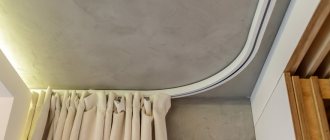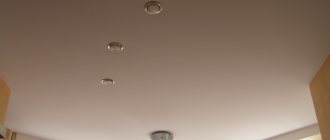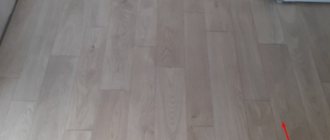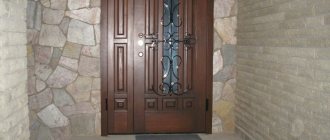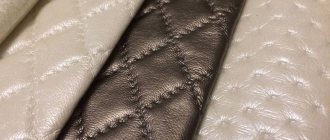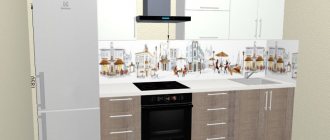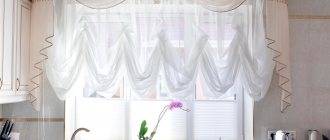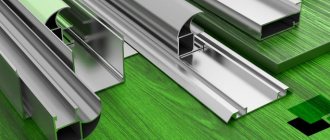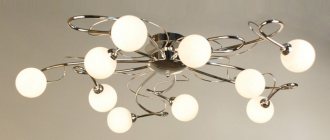The well-known laminate appeared several decades ago in Sweden. Thanks to a lot of advantages and a large number of competitive advantages over other materials, this flooring has gained worldwide popularity. In this article we will talk about what laminate is and what it comes in. Advice and recommendations from buyers and specialists will help you make the right choice when purchasing, as well as evaluate the features of class 33 coverage.
Class 33 laminate structure
The basis of any laminate design is a pressed wood-fiber web. Next, a layer of paper is applied to the plate, which has undergone heat treatment and a press. It is pre-impregnated with melamine resins; their thickness may vary. The larger the layer of melamine resin, the stronger and more wear-resistant the floor covering. After applying the paper, the slabs are decorated with patterns and designs. Typically a wood texture is used that imitates natural wood. The surface of the laminate can be smooth or embossed, it all depends on the stamping. The bottom layer of the boards is also made of melamine for greater strength and protection.
How laminate works
Laminated parquet is a multi-layer decorative finishing coating obtained by pressing under high pressure. Consists of (from top to bottom):
Laminate structure.
1. Overlay
This is a transparent layer of high-strength polymer resins (melamine, acrylic, etc.). The quality, thickness, hardness and impact resistance of the film determine such parameters of the laminate as hygiene, resistance to moisture, abrasion and impact loads, as well as the service life of the flooring material. Depending on the design of the collection, the overlay can be:
- smooth (satin matte, semi-gloss, mirror-glossy);
- structural (embossing imitating the texture of natural wood processed by brushing, etc.).
2. Decorative layer
It is a special paper with a pattern applied to it using high-precision printing. Decors can be very diverse: imitation parquet, solid boards, palace solids, ceramic tiles, natural stone, fabric and much more.
European premium laminate manufacturers add another layer to this layer - kraft paper, which is pressed with a decorative layer and overlay. This technology significantly increases the strength characteristics of the finished lamellas. The technique is called HPL (High Pressure Laminate).
HPL laminate structure.
3. Carrier board
This is the basis of any laminated parquet. Standard thickness is from 6 to 14 mm. It consists of the plate itself and a tongue-and-groove locking set of the “Click” or “Lock” type. Thanks to this, the laminate quickly and easily assembles into a single, monolithic, even sheet without differences or cracks.
To increase the moisture and water resistance of joints, manufacturers treat locks with special polymer (AquaStop, AquaResist) or paraffin (Wax) compounds.
Such characteristics as the level of resistance to compression, bending, and tension loads depend on the density and cross-section of this layer. Simply put, this means what weight is acceptable for the coating, how long the laminate can withstand intense foot traffic, etc.
Available in two types of fiberboard:
- HDF (High Density Fiberboard - high-density fiberboards). Density varies from 750 to 1200 kg/m3. Differences from analogues are increased strength and weight. This means that flooring made on the basis of HDF “works” perfectly in particularly difficult conditions (shopping centers, corridors, classrooms, offices, etc.);
HDF is high density fibreboard.
- MDF (Medium Density Fiberboard - medium density fiberboard). Density range – from 400 to 750 kg/m3. This type of fiberboard is often used by Chinese or Russian non-brand manufacturers. They produce lighter laminated boards that will be used at home. Often they try to compensate for the insufficient level of strength by increasing the thickness of the lamellas.
4. Base or stabilization layer
It is formed from paper impregnated with synthetic thermosetting resins. Designed to protect the lower part from moisture and prevent deformation of the slats. In addition to the tread, it also has an informational function, since the base layer often indicates the production date and batch number, as well as the brand name and registered trademark.
According to the European standard DIN EN 13329, the laminate has a three-layer structure:
- Decorative paper and overlay compressed into a single component;
- Bearing strip;
- Base layer.
For the average person, this information is insignificant. However, professionals understand that this is a laminate of the DPL series (Direct Pressure Laminate - direct pressure laminated coating). The difference from HPL is that the top and bottom layers are immediately, directly pressed onto the supporting base. Most factories use this technology, including Chinese, Russian and inexpensive European brands.
For those wishing to install parquet in rooms with high levels of humidity (bathrooms, dining rooms, laundries, etc.), waterproof PVC laminate is available. The difference with the traditional one is that a slab of composite super-hard plastic acts as a supporting board. The cost of such a coating is high, but it can replace porcelain stoneware or floor ceramics and decorate the entire area of a house or cafe in the same style.
Waterproof laminate based on PVC composite.
Types of laminate
Manufacturers divide laminated flooring into two main classes - for commercial and for home use. Class 21-23 includes laminate, which is most often installed in residential buildings and apartments. Class 33 commercial laminate, which has much higher technical specifications, is typically used in offices, warehouses, stores and gyms. The commercial type of coating also includes classes 31 and 32, but class 33 is more durable and durable, plus, it can also be used for flooring in a house or apartment.
Classification of laminate by class
Laminate flooring differs in two main parameters:
- Production method (HPL or DPL);
- Load class or wear resistance.
Let's take a closer look at the last criterion. The wear resistance class of a laminate is a quality category that determines the possibility of using a finishing material in commercial and domestic conditions, as well as its service life.
The European standard EN 13329 "Elements with a surface layer based on aminoplast thermosetting resins - characteristics, requirements and test methods" contains complete information on how to determine and calculate the load class. This document almost corresponds to the Russian analogue of GOST 32304-2013 “Laminated floor coverings based on dry-process fiberboards. Technical conditions".
The European standard includes the following list of tests for samples:
- Abrasion resistance or overlay strength (Taber test);
- Impact resistance (test with a small ball “shooting” at the sample and test with a large falling ball);
- Indentation resistance (metal ball test);
- Resistance to the impact of the legs of moved furniture;
- Resistant to caster chairs;
- Inertness to a burning cigarette;
- Resistance to contamination (fruits, juices, wine and other aggressive chemicals);
- Moisture resistance - swelling of the slab in 24 hours when completely immersed in water as a percentage of the volume of the sample. A quality product must have a water absorption coefficient of no more than 18%.
Device for conducting Taber tests.
After all the tests have been carried out, the main characteristics of the laminate are determined and a load class is assigned to it. Moreover, preference is given to the lowest results, even if the difference is tenths. This means that if, according to the results of one inspection, the coverage corresponds to category 31, and according to the others - 32, then it is assigned a lower class.
The first test is the taber-test, or determining the degree of abrasion of the overlay. To carry it out, a special unit with a grinding wheel or friction rollers with a glued ring made of high-density rubber is used.
The results are determined by the number of revolutions and are divided into 7 groups or abrasion classes:
- for use at home 21, 22, 23;
- for commercial premises 31, 32, 33 and 34.
Table 1 . Abrasion class of laminated floor coverings according to GOST 32304-2013.
| Category | AS1 (grade 21) | AC2 (grade 22) | AC3 (grade 23) | AC4 (31/32 class) | AC5 (grade 33) | AC6 (class 34) |
| Average value from abrasion starting point | ≤900 | ≤1500 | ≤2000 | ≤4000 | ≤6000 | ≤8500 |
The abrasion class determines where exactly the laminate can be used. More detailed information is given in the table below.
Table 2 . Areas of use of laminated coatings by class.
| Load class | Pictogram | Room type | Application intensity | Examples | Life time |
| 21 | Residential | Moderate (occasionally) | Bedrooms, guest rooms | 10 years | |
| 22 | Residential | Normal (for frequent use) | Living rooms, dining rooms | 10 years | |
| 23 | Residential | Intensive | Stairs, corridors, kitchens | 10-12 years | |
| 31 | Commercial | Moderate (occasionally) | Hotel rooms, offices | 10-15 years | |
| 32 | Commercial | Normal (for frequent use) | Receptions, shops | 15-20 years | |
| 33 | Commercial | Intensive | Shopping centers, schools | 20-30 years | |
| 34 | Commercial | Reinforced (especially difficult conditions) | Industrial facilities | Up to 40 years old |
Let us explain why the abrasion criterion is most important for buyers. The floor covering must withstand not only foot traffic (including walking barefoot, in slippers, outdoor shoes with heels), but also abrasive loads: dust, small debris (sand, soil particles), animal claws, etc. Over time, under the influence of these factors, the overlay becomes thinner and the laminate becomes unusable. There is no need to be scared - the service life varies from 10 to 30 years and depends, of course, on many other parameters. For example, a dirt-proof mat of the “grass” series placed in front of the front door, as well as the presence of protective pads on furniture legs, increases this period for class 31 or 32 laminate by one and a half times. On the contrary, chairs with iron legs without protective rims accelerate abrasion and reduce the service life by almost half.
Dirt-proof mat on laminate.
We will pay special attention to the second series of tests - impact resistance. Specialists from ANO TsSL Lessertika (Kronoshpan LLC and Kronostar LLC) participated in the development of the Russian standard for laminated coatings GOST 32304-2013. Unfortunately, they did not include two critical tests required to give a laminate a 34 grade. This:
- impact test;
- surface resistance to chair wheels.
According to EN 13329, a laminate floor of wear resistance class 34 must have the following indicators:
- water absorption coefficient – up to 8%;
- abrasion resistance class - AC6;
- impact strength – IC4 (≤1600 mm and 20 N).
The first two indicators coincide with the Russian standard, but the last one is not provided for at all. Because of this small difference, class 33 laminate from any manufacturer (including Asian ones) can be certified in Russia as class 34. European standards are more demanding on the characteristics of the coating.
All other types of tests are carried out in a standard manner. The results are processed and the laminate floor is assigned a general wear resistance class.
Table 3 . General load class according to EN 13329.
Table 4 . General load class according to GOST 32304-2013.
Laminate class 33: technical characteristics
This flooring has higher values for a number of indicators. The main ones:
— The laminate is equipped with a collapsible system of reinforced locks, which are treated with special impregnation for greater moisture resistance.
— As for the dimensions, the technical characteristics of class 33 (board thickness, length and width) are ahead of the characteristics of analogues. Laminate is produced with a thickness of 8-12 mm.
— Moisture-resistant impregnation of the board over the entire thickness, which allows the coating to be used in rooms with high levels of humidity - bathroom, kitchen, etc.
— No noise when walking, laminate is an additional sound and heat insulation for the floor.
— The coating tolerates frost well.
Class 33 laminate, the technical characteristics of which are described above, has many different designs, natural tones and a variety of patterns are used, most often imitation of natural wood is used. The structure of the board has an anti-slip, textured surface. There are models with imitation tile structure or stone-like tile joints.
Laminate sizes 32 classes
Often the size of the lamella for class 32 laminate is determined by the manufacturer. However, basically it has certain standards that have been developed experimentally and allow for maximum service life.
The most optimal lamella aspect ratio is 1292×194 mm. Such a board can last up to 15 years because the surface tension is perfectly distributed over the surface without creating weak points. Laminate does not deform due to the weight pressing on it and can last longer.
Today you can find a variety of class 32 laminate options. The most common lengths are 605, 1285, 1292 millimeters. But there are options 1288, 1380 and many others, depending on the manufacturer.
The most common width ranges from 192-195 mm. Moreover, in cases where class 32 laminate imitates ordinary parquet, the width can be reduced to 90 mm, and if a tile or stone covering is imitated, when the lamella is represented by squares and has equal length and width, it can reach 330 mm.
Advantages of laminate
The advantages of class 33 laminate include:
— huge selection and assortment;
— high level of strength and moisture resistance;
- noise suppression;
— wear resistance;
— use of natural materials for production (cherry, walnut, ash, oak, etc.);
— modern manufacturing technologies;
— resistance to ultraviolet rays: the laminate does not fade and does not lose its shade;
— safety for human health, the coating does not cause allergic reactions;
- low cost compared to parquet or solid wood.
Reviews of class 31 laminate
In accordance with consumer reviews, conclusions can be drawn about the quality of class 31 laminate. If you would like to add your review to the table, please write it in the comments.
| Author's name | Customer review |
| Vasya L. | The price and quality of coverage in category 31 are fully consistent. It bears loads well even in the corridor. Over 2.5 years of operation, no significant changes occurred: the appearance remained the same. |
| Olesya V. | We laid class 31 laminate flooring in the room. Water was spilled several times. If you wipe it right away, nothing bad will happen. |
| Maxim E. | The laminate in the room is like new for 6 years. Moreover, there is a dog and two children at home. No complaints. |
| Alina L. | The laminate lasted for more than three years. We accidentally spilled water and didn’t notice it right away. After some time, the ends swelled and now the surface is uneven. Several days passed, nothing changed. Conclusion: if water gets in, wipe it off immediately, and if you don’t notice, you’ll have to change the floor. |
| Victor S. | In our case, with a limited budget, we decided to purchase laminate of 31 categories. And they didn’t regret it. The coating looks beautiful. So far there are no complaints. After a year of use, it has not worn out, has not swollen, there are no scratches or other damage: like new. |
| Igor G. | It took me about 10 hours to lay the laminate flooring with a partner, while with a normal coating such work usually takes about four hours. The locks do not fit together and snap into place with great difficulty. |
| Egor A. | During installation, I noticed an unevenness in the fastening line. Due to this, the locks no longer latched. At first I thought the wall was crooked, but when I looked at the board, I realized that the boards were a little uneven. |
| Georgy N. | I can't say anything bad about the quality of the coating. But the editing is a complete mockery. The end locks came together with difficulty, and along the length they sometimes converged, sometimes diverged. The result was two days of torment. We'll see during operation. |
| Oleg K. | The resistance of the coating to impact and abrasion of class 31 has been confirmed. For four years nothing happened to the coating. |
Flaws
Class 33 laminate is considered almost the most ideal coating. It does not slip, withstands temperature changes and large mechanical loads. Some note a slight echo, which is typical for all types of laminate. However, in class 33 it is barely noticeable. Leveling the floor will help completely get rid of unpleasant resonance. Before laying the laminate, you need to fill the surface with concrete and perform the so-called screed. Then you will not hear any extraneous noise.
Some buyers who purchased laminated coating made in China wrote in their reviews that the products were made of poor quality. Some were dissatisfied with the locking connection system, others complained about poor sound insulation. Unfortunately, laminate flooring from China is often defective. This can be avoided by purchasing products from more reputable manufacturers. However, it is worth noting that such a laminate will cost much more than the Chinese one.
This flooring is afraid of water, but if you choose a laminate (class 33) that is moisture-resistant/water-resistant, you don’t have to worry about it. Another disadvantage is that large and deep chips in the panels cannot be repaired. But this can be easily solved by replacing the damaged tiles.
What are the advantages of the material?
The following properties can be considered among the advantages. It doesn’t matter whether Germany acts as a manufacturer, or another country, the company chosen is Pergo, Practice or something else. Low cost when compared with competitors such as parquet or solid wood.
The coating will definitely not cause allergic reactions. Cronotex is also trying to keep an eye on this. Even under the influence of the sun, the color is completely preserved and does not fade over time. And the “cherry” shade is completely preserved. The Pergo company also adheres to this requirement, as does Praktik.
Only modern technologies are used in production. Germany became one of their founders. And he still supplies us with his equipment. And it produces products in cherry color, for example.
Production only based on natural materials. Pergo, Practitioner is no exception. And natural colors, for example, “cherry”.
Characterized by high wear resistance. Even if the color “cherry” is chosen.
There is also a noise reduction property, Kronotex products are no exception, the thickness does not change.
Moisture resistance and strength also remain at a high level; even parquet is slightly behind laminate in these indicators, although its thickness is different.
The range and choice is really huge, for example, all companies produce a “cherry” option.
Comparative characteristics of 32 and 33 laminate classes
Many buyers equate these classes of flooring. They believe that the technical characteristics of the laminate, the classification of which was described above, are identical. Therefore, they have a question: “Why overpay?” This is not entirely true. To understand the difference between 33 and 32 classes of laminate, you need to compare their properties and characteristics.
The thickness of the boards for a commercial coating can reach up to 12 mm, while class 32 has a maximum slab size of 10 mm. Class 33 has a reinforced locking system, which is treated with special impregnations that protect it from moisture. Class 32 has a conventional locking system. Class 33 laminate is suitable for rooms with higher traffic, while its competitor is able to withstand less severe loads.
The only thing in which these two types of flooring are similar is the variety of textures. There are models that imitate wooden surfaces, there are stone panels, etc.
Manufacturers of 33 classes of laminate have released a small collection of glossy indelible coatings. You won’t find this in class 32.
Other laminate classes
In addition to class 32, there are other strength classes. PLEASE NOTE! Strength class is a category of material that is assigned only to member companies of the Association of Laminate Coating Manufacturers, a European organization. If the firm is not a member, the class is not assigned.
However, manufacturers often arbitrarily indicate one or another class on their material in order to increase sales. In order to determine the authenticity of the material, you should check the certificate .
- 31st grade. This material is the softest and most unstable of the commercial varieties. At the same time, it is quite suitable for home use, having sufficient qualities and durability. In addition, it can be used in small offices or rooms with low floor loads.
- 33rd grade. Durable and load-resistant coating. The thickness allows the use of furniture on wheels and shopping carts. The material is resistant to abrasion and can easily withstand the movement of a large number of people in hard shoes (women in stiletto heels). At the same time, prices for class 33 differ significantly from lower categories of material, which reduces its distribution and demand.
- 34th grade. It is sometimes called sports because it can be used in gyms. It has the highest possible characteristics and is resistant to all types of loads. It is noteworthy that class 34 has not yet been officially included in the classification of the Association of Laminate Coating Manufacturers, but it is already being produced and is indicated as being fully used.
How to choose the right laminate?
To purchase laminate flooring, you need to know what to look for when purchasing. It’s worth deciding what properties your future floor should have:
— moisture resistance;
- impact resistance;
- wear resistance, etc.
However, class 33 laminate has all this. The technical characteristics of this type of coating have the highest values for each indicator. If you have decided on the properties, you can choose a suitable design that suits you at a price. Be sure to pay attention to the thickness of the coating; this is what guarantees a long service life.
It is better to choose class 33 laminate. The characteristics of this flooring are such that with proper care it will last more than 20 years. Before purchasing, check with the seller whether the product has passed European testing. The amount of formaldehyde contained in each type of laminate should not exceed the norm. The EN13329 badge indicates that the product is high quality and tested.
Laminate selection criteria
When purchasing flooring, you should pay attention to the following:
- Laminate class.
- Surface moisture resistance.
- Type of locking connections and installation method.
- Compliance of the material with the interior design.
Let's take a closer look at these points.
Laminate class
To determine wear resistance in production, the following test is carried out: the board is fixed in a special device under an abrasive disk and the number of revolutions needed to destroy the top layer and leave noticeable scratches is calculated. In accordance with this number, the class of the laminate is determined:
- Up to 11 thousand revolutions - 21 or 22 class.
- 11-15 thousand – 23 or 31 class.
- More than 15 thousand - 32 or 33 class.
Table. Correspondence of the laminate class to a specific room.
| Class 21 laminate is designed for light loads. The service life of such a product is minimal, and rarely reaches 4 years. It is used in bedrooms and closets. Currently, such a laminate is difficult to find due to its lack of demand. |
| Class 22 laminate is suitable for living rooms and children's rooms. It is also designed for residential use. Service life up to 4 years. |
| Class 23 laminate is used for residential premises where the load on the floor is high, for example, where there is a lot of heavy furniture. The service life is also up to 4 years. |
| Class 31 laminate refers to coatings for commercial buildings with light loads. Its quality is higher than that of laminate for residential premises. It is well suited for conference rooms. The service life under these conditions will be up to 3 years. If you purchase this material for a living space, it will last much longer - up to 12 years. |
| Class 32 laminate – designed for commercial premises with medium load. For example for reception areas, offices, classrooms. Service life for commercial premises is up to 5 years. In a residential area this is up to 15 years. |
| Class 33 laminate is used in commercial premises with heavy load on the floor. Examples of such premises are restaurants, bars, gyms and shops. Maximum service life is 6 years. In residential premises - up to 24 years. |
If you choose coating for a commercial premises, then it is best to take at least class 32. When choosing material for your home, focus on class 31 laminate. And yet, the 32nd class has the optimal price-quality ratio. Therefore, if the difference in price is insignificant, do not save money - give preference to quality.
Another important parameter that I would like to touch upon in this paragraph is the thickness of the laminated board. It varies from 6 to 12 mm. It is best to choose a coating with greater thickness, as this affects the strength and ease of installation of the floor. It is also important that the greater the thickness of the coating, the more pronounced the sound insulation properties are. Therefore, when purchasing, you should choose a board with a thickness of at least 8-12 mm.
Moisture resistance
The moisture resistance of laminate is a necessary option for problem areas (kitchen, children's room). How to choose the right waterproof and durable coating? The first thing you should pay attention to is the stabilizing layer and the HDF board. The higher the density of the slab, the less the material is afraid of water and the more reliable its locks.
Also worth noting:
- If the boards are laid with glue, then there are no gaps between them, which means that moisture will not penetrate inside. This coating has a significant drawback - it will be impossible to replace several damaged lamellas, unlike those boards on which the side locks are simply snapped into place during installation .
- An alternative is a waterproof interlocking laminate on a standard base.
The moisture resistance of the material should be no more than 18%. To check this, you need to cut off a small piece of the slab and put it in water for 6 - 8 hours. A high-quality board will increase in volume by 15 - 18%, a low-quality board - by 30 - 40%.
The technology for producing moisture-resistant laminate is similar to the manufacturing process for a standard coating. In the first case, the slabs are made not from shavings, but from solid wood fibers. The process of pressing and special processing of wood fibers occurs under high pressure and high temperature. As a result, the material becomes very dense and does not allow even the smallest drops of water to pass through. In addition, after pressing, the slabs are coated with a special solution, which does not allow the development of fungus and mold when using the material in rooms with high humidity (bathroom, bathtub, bathhouse). The manufacturing process is completed by applying several layers of a substance containing resins and wax, which repels water.
When choosing a suitable coating, you should pay attention to the fact that there are moisture-resistant and water-resistant laminates on sale, which have fundamental differences. Waterproof slats are resistant not only to moisture, evaporation and dampness, but also to direct contact with liquid. Their main difference from moisture-resistant analogues is that the boards do not have a wood-fiber base, but a plastic one.
Let's summarize the above:
- Moisture-resistant laminate is not afraid of dirt and wet cleaning, does not promote the development of bacteria and fungus and is excellent for installation in the hallway and kitchen.
- As a covering for a bathroom, sauna, bathhouse, swimming pool, balcony and veranda, it is better to use a waterproof material that will withstand prolonged exposure to water and atmospheric conditions.
Environmental friendliness
In the production of laminated flooring boards, phenol-formaldehyde resin is used, which reduces production costs and the price of the final product. It releases formaldehyde, which is hazardous to health. Therefore, when purchasing laminate flooring, you need to clarify the degree of hazardous resin content in the tiles. In Western European countries, the content of formaldehyde is strictly regulated.
When choosing a coating, one of the ways to protect yourself from low-quality goods is to examine the opened packaging. The boards should only emit a faint aroma of sawdust. Any foreign smell - glue, paint - should alert you. Too cheap laminate in almost 100% of cases contains harmful impregnations in excess of the norm.
Installation method and type of locks
An important criterion when choosing a laminated floor covering is the method of connection with locks located at the ends of each panel.
There are two main types of laminate panel connections:
- Adhesive laminate is cheaper, but only professionals can install it, as it is quite difficult to do it yourself. The panels are connected at the ends using quick-drying glue. Due to the use of glue, there are no gaps left. Therefore, this type of coating is more moisture resistant than interlocking. The disadvantage is the impossibility of partially replacing damaged panels without compromising the integrity of the main floor. Also, the backing of such a laminate should be made of plastic, not foam. This generally reduces the soundproofing properties of the base.
- The interlocking laminate is laid without the use of glue due to the special design of the panels. This coating can be repaired, since the panels are not held together with glue. The main disadvantage is the susceptibility of joints to moisture. There are two types of locks: click locks and lock locks. Click locks are easy to install, they are double locks and are located at an angle of 45 degrees. For them, a curvature of the base of no more than 3 mm per linear meter is allowed. Panels with lock locks are even easier to install than with click locks; professional skills are not required for installation.
Laminate in interior design
In this paragraph, we will consider not the combination of colors of the floor and walls in the interior, but, directly, the criteria for choosing a high-quality and aesthetically beautiful coating.
Classic laminate is an imitation of parquet and wooden boards. Each natural board has a unique texture and pattern. Therefore, the best laminate can boast of minimal repeatability of the pattern, the presence of knots and natural variegation of the wood. European production can achieve 1:6 image repeatability. This means that in 4 packs there must be at least 6 excellent color options. In the most expensive premium collections, this ratio reaches 1:60.
Cheaper samples result in uniformly colored floors with minimal pattern variation. When producing such a coating, the simplest imitation pattern is used, and the repeatability is 1:3.
Another design element of the board is chamfering. What is it and what are the advantages of such lamellas? A chamfer is a V-shaped bevel of the end edge (1-2 mm deep), due to which, when laying, small grooves appear at the joints of the boards. The chamfers are found both along the entire perimeter of the board and on 2 long sides, double-sided. A sign of an expensive laminate is its complete resemblance to parquet, and the chamfer only enhances this similarity, because natural wood almost always has such grooves. In addition to aesthetics, the chamfer allows you to increase the service life of the coating by 2-3 times, and when exposed to moisture, it helps the coating not to lose its original shape.
An important advantage of using laminated boards with a chamfer is that you don’t have to spend a lot of money and effort on perfectly leveling the floor. The chamfers hide all imperfections, provided that the difference on the base is no more than 4 mm per 1 meter.
Installation features
Laying class 33 laminate flooring is no different from other types. A groove on one side of the panel snaps into a special slot on the other tile. The system connects to form a perfectly flat surface. Laminate flooring does not need to be attached to the floor with glue or screws. When moving, you can remove it and take it with you. Laminate does not need to be coated with paint or varnish; it does not require additional sanding or other manipulations. The only thing you need to do is treat the surface with special compounds that will hide scratches and give the floor a pristine shine. In addition, protective equipment will extend the life of the laminate.
What is the difference between 8 and 12 mm thick laminate?
The thickness of the laminate is determined by its load-bearing (working) layer. All other layers are approximately equal, the difference between them by class is a fraction of a millimeter.
The thickness of the supporting layer determines the resistance of the material to external mechanical loads - pressure, strength, bending resistance, etc. Strength class 33 has panel thicknesses ranging from 8-12 mm . At the same time, these dimensions cannot be considered only from the standpoint of strength or thermal conductivity.
The point is that thinner panels may be more durable. This depends on the manufacturing technology, the material of the supporting layer and the presence of a chamfer. Thin panels usually do not have it, forming a canvas of a uniform appearance.
Thicker panels come with a chamfer, which gives the surface a more natural look of a set of boards. If the chamfer is made on thin panels, this weakens the joint and makes it easier for water to enter. Therefore, a chamfer is always present only on thicker samples .
Main types
Laminate of any class has certain varieties. Class 33 also has various designs.
For example, depending on the number of stripes it happens:
- Single lane.
- Two-way.
- Three-strip laminate.
The number of stripes on the panel brings the canvas closer in appearance to the usual floor slats, which makes the surface more natural and natural.
In addition, various surface types are available:
- Glossy.
- Matte.
- Relief (rough).
In addition to the level of gloss, the material has a lot of different color or texture options. Basically, imitation of different types of wood is used, but there is also material that replicates the stone structure, leather, tiles, etc.
The choice of one type or another is made independently; any advice can only have advisory value and should not be taken as a guide to action.
